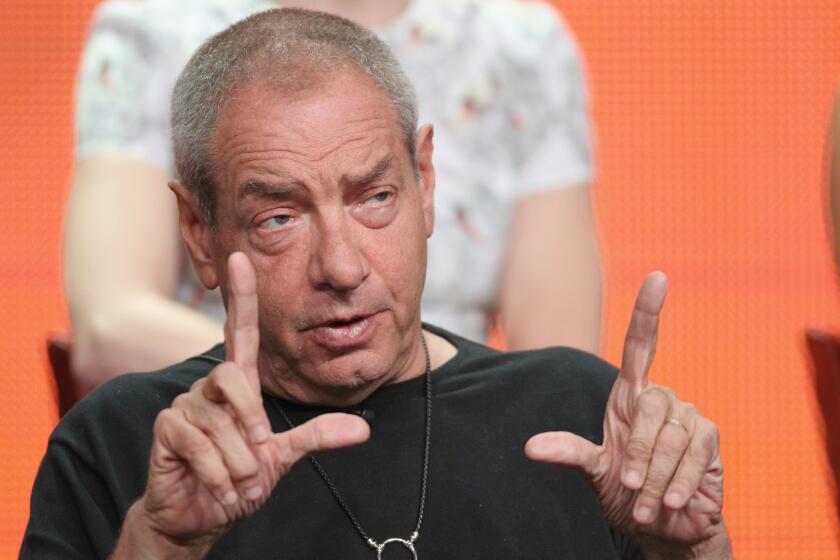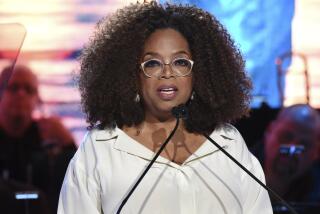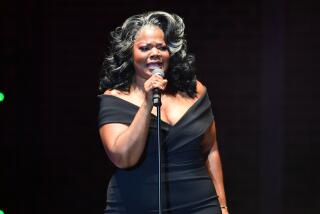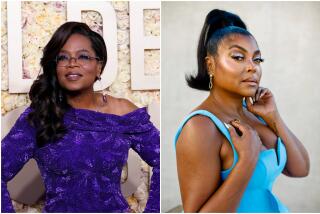Review: Oprah asks âWhere Do We Go from Here?â The answers are raw â and necessary
Oprah Winfrey isnât president yet, but more proof that she should occupy the Oval Office arrived during a television special the talk show pioneer launched to address national grief, rage and calls for justice surrounding the police killing of George Floyd.
The two-part special, âWhere Do We Go From Here? A Conversation led by Oprah,â is airing on OWN and 18 more Discovery networks on Tuesday and Wednesday nights and features guests that include âWhen They See Usâ director Ava DuVernay and Democratic ray of hope Stacey Abrams.
âWe come to you on this day, which represents the final day of George Floydâs memorial, and just like in our own families, often we canât begin to process until after the burial or the memorial service,â said Winfrey in her opening statement.
âIâve been talking on television about racism now for over 35 years,â she explained, saying sheâd done more than 100 shows on racism, including those featuring the L.A. riots and Rodney King. âIn all those experiences though, I donât recall a moment quite like this one. Because we find our nation on a precipice ... The same question keeps popping up over and over. Will this be the moment that changes our country?â
Amid the unrest following George Floydâs death, local TV news channels like KCAL 9, Fox 11, KTLA 5, ABC 7 and NBC 4 are making â and learning from â old mistakes.
What ensued was an hour of refreshing, honest, elevated and personal conversation prompted by Winfreyâs three main questions: âWhat matters now? What matters next? What do we want?â Winfrey led the exchange with the confidence and expertise of a leader, which was a sight for sore eyes given what weâve seen out of Washington since COVID-19 pushed us indoors and Black Lives Matter protests got us back out.
She broadcast from what appeared to be her home, in front of a dark fireplace, in an upholstered chair, coffee cup on the table, slippers on her feet, facing a wall of screens where her guests were video-conferenced in.
The hour focused largely on the here and now â their reactions to Floydâs killing, how we got here and the protests â while Wednesdayâs will look at where we go from here. Her guests, whom she introduced as âcritical thinkers who match their words with actions,â also included Atlanta Mayor Keisha Lance Bottoms, âSelmaâ actor David Oyelowo, writer Charles M. Blow, Color of Change President Rashad Robinson and NAACP national board member Rev. William J. Barber II.
âJust like in your own family, the family that is our country, I donât believe we can move forward without calling out that pain. I want to ask this group about the collective grief and anger,â she said to her panelists.
The first profound analysis came from writer Charles M. Blow, who talked of his reaction to the âcallousnessâ of Floydâs killing. He also argued police body cameras arenât the answer to stopping brutality against Black people. Just look at the hubris in Floydâs case: Officer Derek Chauvin knew he was being filmed and âhe doesnât even move enough to disturb the sunglasses on his forehead,â Blow said. âHe did not care the cameras were on him. I donât believe thereâs really necessarily a technological fix to a cultural problem. ... This has always been about power, and the police are the lowest cog in this machine. Thatâs the one that touches you.â
âWhere Do We Go from Here?â is one of several examples of television scrambling its regular programming to show solidarity, or at least appear sympathetic, to the calls for systemic change that have accompanied the protests in the wake of Floydâs death.
CBS Newsâ Gayle King anchored âJustice for All,â described as a âprime time special exploring the nationwide fury over racism and brutality in policing in the wake of George Floydâs death.â BET streamed âBET remembers: George Floyd,â covering his entire funeral service.
This weekend, CNN and âSesame Streetâ held a town hall for children and parents titled âComing Together: Standing Up to Racismâ and featuring Big Bird, Van Jones and Erica Hill. Among PBSâ slate of programming is âAmerica in Black and Blue 2020â next Monday.
Other networks with fare that usually leans in favor of law enforcement and often shows Black people as perps tried to replace it with less tone-deaf programming. Tuesday ID aired âThe Murder of George Floyd: A Nation Responds,â a panel discussion about police violence, law enforcement reform and activism across the country hosted by IDâs Tony Harris.
Hours earlier, Paramount Network announced it would no longer air âCops,â which it put on hold earlier this month after Floydâs death. A&E, which pulled its own âCopsâ-on-steroids docuseries âLive PD,â is reportedly evaluating the right time â if there is one â to bring it back.
On Oprahâs special, there was no need to backpedal. Abrams said when she saw âthe knee on the neck moment ... thatâs what a hunter does on the neck of a deer while waiting for the fight to ebb out. Waiting for the life to ebb out.â
âWe have to recognize that while George Floydâs horrific murder was a catalyst, we are dealing with confluence of events that all demand action,â said Abrams. âThe 110,000 people whoâve died from COVID-19 this year, a disproportionate number are Black. When we talk about 40 million people losing their jobs, a disproportionate number are Black. When we talk about healthcare, a disproportionate number [of those without it] are Black.â
Critics say the popular TV shows of âLaw & Order,â âChicago PDâ and âFBIâ creator Dick Wolf create harmful misperceptions of the criminal justice system.
Oyelowo appeared on the verge of tears when Winfrey asked him what he was feeling: âI have spent so much of the last two weeks crying,â he said. âOne of the moments where that began was when I went to speak to my son and I didnât have the words. Because George Floyd wasnât resisting arrest. So itâs not like saying to my son, âPut your hands on the dash, donât be confrontational.â Those conversations are already emasculating. To basically say, âForget about justice in an interaction with police. Just come home alive.ââ
DuVernay, her voice hoarse, expressed exhaustion at the energy she and other Black people have had to put toward explaining racism, a 400-year-old problem in America: âEducating Caucasian people ... and hand-holding folks through a process that seems like it never takes hold,â she said. âItâs not a broken system. It was built to function exactly as it is. It feels disingenuous for us as a society to act like weâre suddenly horrified.â
Bottoms held up her âgrandmotherâs grandparentâs slave records and documentsâ and said sheâs been calling on her ancestorsâ strength a lot this week. âHow did they get past humiliation and hurt and anger and pain? The only thing I keep coming back to is that they believed there was something better for their children, and their childrenâs children, and thatâs where we are in America. Weâve got to be believe in word and deed that thereâs something better.â
When the conversation moved onto protests, DuVernay lamented how demonstrators, looters and rioters were terms used interchangeably on the local news. âSome have said âGosh, theyâre losing the message ... because they protest in the day and loot at night ... I really invite people to think about it. If your concern with the murder of Black people by police can be deterred or shifted because someone is taking a pair of jeans from a Target, then youâve got to look at how much you cared about the murder of Black people by police to begin with.â
More to Read
The complete guide to home viewing
Get Screen Gab for everything about the TV shows and streaming movies everyoneâs talking about.
You may occasionally receive promotional content from the Los Angeles Times.








